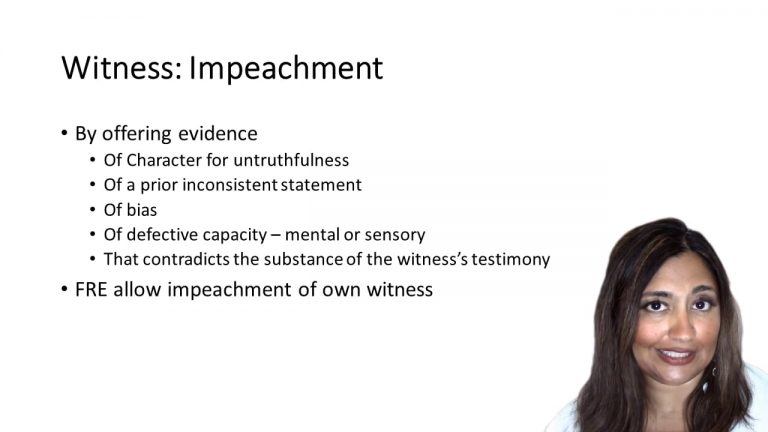SmartBrief
Confirm favorite deletion?
Evidence Keyed to Sklansky
United States v. Webster
Citation:
734 F.2d 1191 (7th Cir. 1984)Facts
The defendant was accused of aiding and abetting a bank robbery. At the trial, the prosecution called the bank robber as a witness. The bank robber gave testimony that if believed would have exculpated the defendant, whereupon the government introduced prior inconsistent statements that the robber had given to the FBI. The court instructed the jury that it could only consider the statements for impeachment, in other words, the bank robber’s truthfulness. The jury convicted the defendant. The defendant argued that the court improperly allowed the government to get inadmissible evidence before the jury by calling a hostile witness and then using his out-of-court statements, which would otherwise be inadmissible hearsay, to impeach him.
Only StudyBuddy Pro offers the complete Case Brief Anatomy*
Access the most important case brief elements for optimal case understanding.
*Case Brief Anatomy includes: Brief Prologue, Complete Case Brief, Brief Epilogue
- The Brief Prologue provides necessary case brief introductory information and includes:
Topic:
Identifies the topic of law and where this case fits within your course outline.Parties:
Identifies the cast of characters involved in the case.Procedural Posture & History:
Shares the case history with how lower courts have ruled on the matter.Case Key Terms, Acts, Doctrines, etc.:
A case specific Legal Term Dictionary.Case Doctrines, Acts, Statutes, Amendments and Treatises:
Identifies and Defines Legal Authority used in this case.
- The Case Brief is the complete case summarized and authored in the traditional Law School I.R.A.C. format. The Pro case brief includes:
Brief Facts:
A Synopsis of the Facts of the case.Rule of Law:
Identifies the Legal Principle the Court used in deciding the case.Facts:
What are the factual circumstances that gave rise to the civil or criminal case? What is the relationship of the Parties that are involved in the case.Issue(s):
Lists the Questions of Law that are raised by the Facts of the case.Holding:
Shares the Court's answer to the legal questions raised in the issue.Concurring / Dissenting Opinions:
Includes valuable concurring or dissenting opinions and their key points.Reasoning and Analysis:
Identifies the chain of argument(s) which led the judges to rule as they did.
- The Brief Prologue closes the case brief with important forward-looking discussion and includes:
Policy:
Identifies the Policy if any that has been established by the case.Court Direction:
Shares where the Court went from here for this case.

 9m 7s
9m 7s